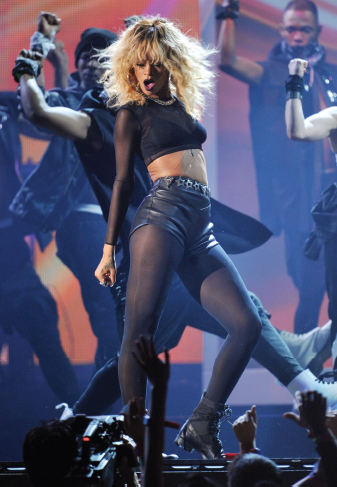Tracking Technology
TRACKING TECHNOLOGY
The Song Machine: The Hitmakers behind Rihanna
by John Seabrook
On a mild Monday afternoon in mid-January, Ester Dean, a songwriter and vocalist, arrived at Roc the Mic Studios in Manhattan for the first of five days of songwriting sessions. Her engineer, Aubry Delaine, whom she calls Big Juice, accompanied her. Tor Hermansen and Mikkel Eriksen, the team of Norwegian writer-producers professionally known as Stargate, were waiting there for Dean.
Most of the songs played on Top Forty radio are collaborations between producers like Stargate and “top line” writers like Ester Dean. The producers compose the chord progressions, program the beats, and arrange the “synths,” or computer-made instrumental sounds; the top-liners come up with primary melodies, lyrics, and the all-important hooks, the ear-friendly musical phrases that lock you into the song. “It’s not enough to have one hook anymore,” Jay Brown, the president of Roc Nation, and Dean’s manager, told me recently. “You’ve got to have a hook in the intro, a hook in the pre-chorus, a hook in the chorus, and a hook in the bridge.” The reason, he explained, is that “people on average give a song seven seconds on the radio before they change the channel, and you got to hook them.”
Today’s Top Forty is almost always machine-made: lush sonic landscapes of beats, loops, and synths in which all the sounds have square edges and shiny surfaces, the voices are Auto-Tuned for pitch, and there are no mistakes. The music sounds sort of like this: thump thooka whompa whomp pish pish pish thumpaty wompah pah pah pah. The people who create the songs are often in different places. The artists, who spend much of the year touring, don’t have time to come into the studio; they generally record new material in between shows, in mobile recording studios and hotel rooms, working with demos that producers and top-line writers make for them to use as a kind of vocal stencil pattern.
As was the case in the pre-rock era, when Phil Spector–produced girl groups led the hit parade, many of the leading artists of the post-rock era are women. Rarely a month goes by without a new song from Lady Gaga, Katy Perry, Beyoncé, Kelly Clarkson, Ke$ha, Rihanna, Nicki Minaj, or Pink near the top of the charts. But the artist who best embodies the music and the style of the new Top Forty is Rihanna, the Barbados-born pop singer. At twenty-four [in 2012], she is the queen of urban pop, and the consummate artist of the digital age, in which quantity is more important than quality and personality trumps song craft. She releases an album a year, often recording a new one while she is on an eighty-city world tour promoting the last one. To keep her supplied with material, her label, Def Jam, and her manager, Jay Brown, periodically convene “writer camps”–weeklong conclaves, generally held in Los Angeles, where dozens of top producers and writers from around the world are brought in to brainstorm on songs. After an album comes out, she may release remixes, like her recent ill-advised collaborations with Chris Brown, to give singles a boost. She has sold more digital singles than any other artist—a hundred and twenty million.

Rihanna is often described as a “manufactured” pop star, because she doesn’t write her songs, but neither did Sinatra or Elvis. She embodies a song in the way an actor inhabits a role—and no one expects the actor to write the script. In the rock era, when the album was the standard unit of recorded music, listeners had ten or eleven songs to get to know the artist, but in the singles-oriented business of today the artist has only three or four minutes to put her personality across. The song must drip with attitude and swagger, or “swag,” and nobody delivers that better than Rihanna, even if a good deal of the swag originates with Ester Dean. 
Source: Excerpted from John Seabrook, “The Song Machine: The Hitmakers behind Rihanna,” New Yorker, March 26, 2012, http://www.newyorker.com/reporting/2012/03/26/120326fa_fact_seabrook.